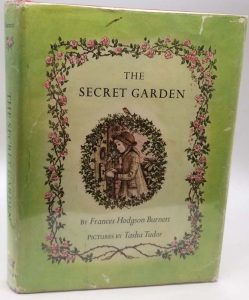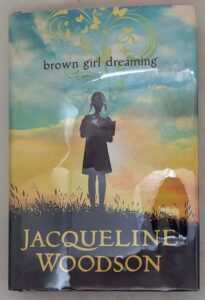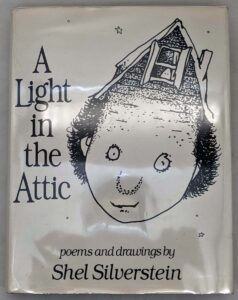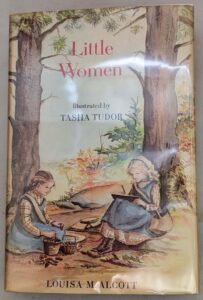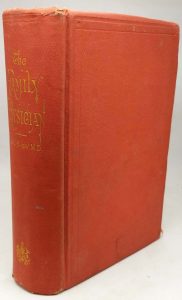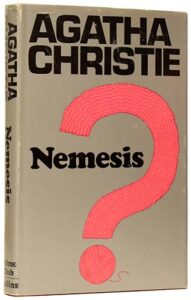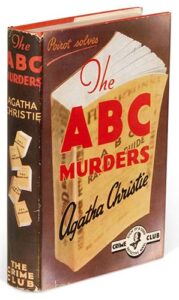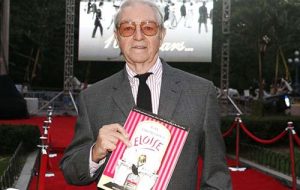The Marvelous Land of Oz: Being an Account of the Further Adventures of the Scarecrow and the Tin Woodman, commonly shortened to The Land of Oz, published in July 1904, is the second of L. Frank Baum‘s books set in the Land of Oz, and the sequel to The Wonderful Wizard of Oz (1900). This and the next 34 Oz books of the famous 40 were illustrated by John R. Neill.
Summary
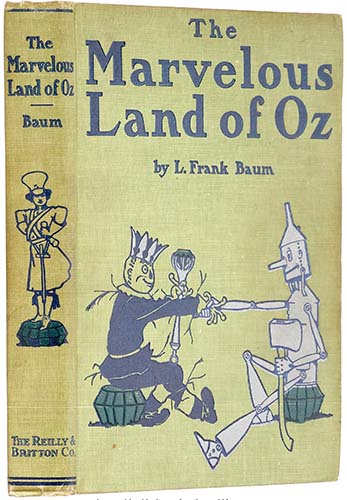
The events are set shortly after the events in The Wonderful Wizard of Oz and after Dorothy Gale’s departure back to Kansas. The protagonist of the novel is an orphan boy called Tip. For as long as he can remember, Tip has been under the guardianship of a cruel Wicked Witch named Mombi and lives in the northern quadrant of Oz called Gillikin Country. Mombi has always been extremely mean and abusive to Tip. As Mombi is returning home one day, Tip plans to get revenge and frighten her with a wooden man he has made, with a large Jack-o’-lantern he carves for a head, thus naming him Jack Pumpkinhead. To Tip’s dismay, Mombi is not fooled by this trick, and she takes this opportunity to demonstrate the new magical “Powder of Life” that she had just obtained from another sorcerer. Mombi tells Tip that she intends to transform him into a marble statue to punish him for his mischievous ways.
To avoid being turned into a marble statue, Tip runs away with Jack that very same night and steals the Powder of Life. He uses it to animate the wooden Sawhorse for Jack to ride. The Sawhorse runs so quickly that Tip is left behind. Walking alone, he meets General Jinjur’s all-girl Army of Revolt, which is planning to overthrow the Scarecrow (who has ruled the Emerald City since the end of The Wonderful Wizard of Oz). Meanwhile, Jack and the Sawhorse arrive at the Emerald City and make the acquaintance of His Majesty the Scarecrow. Jinjur and her crew invade the Emerald City, terrorize the citizens, and loot the city, causing great havoc and chaos. Tip joins Jack and the Scarecrow in the palace, and they escape on the Sawhorse’s back.
The companions arrive at the tin castle of the Tin Woodman (who now rules the Winkie Kingdom following the Wicked Witch of the West’s demise in the first book) and plan to retake the Emerald City with his help. On their way back, they are diverted by the magic of Mombi (whom Jinjur recruited to help her apprehend them). They are joined by the “Highly Magnified and Thoroughly Educated” Woggle-Bug, and aided by the loyal field mice and their Mouse Queen. The Queen of the field mice allows the Scarecrow to take twelve mice concealed in his straw.
When the party reaches the Emerald City, Jinjur and her soldiers imprison the group and lock them away. However, the female soldiers are scared by the field mice and leave the city’s palace. However, they still occupy the grounds of the city, and the palace is surrounded. The travelers are imprisoned in the palace. The Scarecrow proposes manufacturing a clever flying machine with a Gump’s stuffed head to direct it. Tip uses the powder of life to animate this machine, which is assembled from the palace furniture, and they fly off, with no control over their direction, out of Oz. They land in a nest of jackdaws, which is full of all of the birds’ stolen goods. The flying Gump’s wings are damaged in the landing.
The jackdaws return to their nest and attack the travelers, carrying off the Scarecrow’s straw. The nest contains a large amount of paper money, with which the Scarecrow can be re-stuffed. Using Wishing Pills they discover in the container holding the Powder of Life, Tip and his friends escape and journey to the palace of Glinda the Good Witch in Oz’s southern quadrant, the Quadling Country. They learn from Glinda that after the fall of Oz’s mortal king Pastoria decades ago, a long lost princess named Ozma was hidden away in secrecy when the Wizard of Oz took the throne. She also informs them that Ozma is the rightful ruler of the Emerald City and all of Oz in general, not the Scarecrow (who did not really want the job anyway). Glinda therefore accompanies Tip, Jack, the Sawhorse, the Scarecrow, the Tin Woodman, the Wogglebug, and the Gump back to the Emerald City to see Mombi. The crooked woman tries to deceive them by disguising a chambermaid named Jellia Jamb as herself (which fails), but manages to elude them as they search for her in the Emerald City. Just as their time runs out, the Tin Woodman plucks a rose to wear in his lapel, unaware that this is the transformed Mombi.
Glinda discovers the deception right away and leads the pursuit of Mombi, who is finally caught as she tries to cross the Deadly Desert in the form of a fast and long-running griffin. Under pressure from Glinda, Mombi confesses that the Wizard brought her the infant Ozma, whom she transformed into … the boy Tip. At first, Tip is utterly shocked and appalled to learn this, but Glinda and his friends help him to accept his duty, and Mombi performs her last spell to undo the curse, turning him back into the fairy princess Ozma.
The restored Ozma is established on the throne after defeating Jinjur and her army. The Tin Woodman invites the Scarecrow to return with him to the Winkie Country along with Jack Pumpkinhead. The Gump is disassembled at his request (though his head was a hunting trophy that can still speak), Glinda returns to her palace in Quadling Country, the Wogglebug remains as Ozma’s advisor, and the Sawhorse becomes Ozma’s personal steed. The forgotten prophecy is finally fulfilled and Oz is politically whole once more, with Ozma in her rightful position as the child Queen of Oz.
Frank Baum – The Marvelous Land of Oz | First Edition Identification Guide
Please refer to the gallery for detailed images of binding(s) and dust jackets.
| Year | Title | Publisher | First edition/printing identification points |
|---|---|---|---|
| 1904 | The Marvelous Land of Oz | Chicago: The Reilly & Britton Co., 1904 | First edition. Illustrated by John R. Neil, 287 pages. Six states, priority as listed: - 1 - Textual points: Hand-lettered title page, beginning “The Marvelous | Land of Oz”; the date “1904” appears at the bottom of the page. (This date remained unchanged in subsequent printings as late as 1912.) The copyright notice on the verso of the title page has no publication date below it The illustration on page [4] is quite large: the box containing the dedication is 6 1/4 inches tall. Two full- page text illustrations are misplaced: page [22] has Mombi threatening to turn Tip into a marble statue and page [27] has Mombi putting Jack in the stable. Two chapter tailpieces are misplaced: page 82 has a picture of Tip and page 158 has a picture of Jinjur. The inserted pictorial endpapers are printed in dark green on a thin, light-green stock. (In some copies the endpaper stock has faded to a tan or buff color.) Dust jacket: A monochrome version of the binding design in dark green on very light-green stock. The front and back flaps are blank. Size of leaf: 9 by 6 3/4 inches. Thickness of volume'. 11/8 inches. Textual points'. The line “Published, July, 1904” has been added below the copyright notice on the verso of the title page. The illustration on page [4] is considerably reduced: the box is 5 3/8 inches tall. The illustrations on page [22] and page [27] are transposed. The tailpieces on pages 82 and 158 are also transposed. Color plates: Same as #1. Cover State 2 appears most commonly in binding cases B and C, but copies in the light-green form of A occur with enough frequency to indicate that this form of binding case was still in stock when state 2 sheets were printed. Shortened Cover Title [The Land of Oz] Title page, textual points, and color plates: Same as #2. Binding: red cloth. The stamping is similar to #2 with the following changes. The title on the front cover and on the spine has been shortened to The Land of Oz. On the front cover, the title is in silver letters outlined in navy blue. Below it has been added in navy blue “A Sequel to The Wizard of Oz”. The author’s name has been shifted to the lower-right comer of the front cover. A single-rule border surrounds the stamping on the front cover. There are single rules at the top and bottom of the spine, and silver embellishments have been added to the picture of Jinjur. The publisher’s imprint on the spine reads: “The Reilly & | Britton Co.” Several copies have been seen stamped in black rather than navy blue and printed on a thinner paper stock; they measure slightly less than 1 inch rather than 11/8 inches of ordinary copies. Title page, textual points, and color plates: Same as # s 2 and 3 except that the text is printed on a heavy roug-surfaced stock, making a much bulkier book, about 1 3/8 inches thick including the covers. The endpapers are printed in green on a heavy, coated, cream-colored stock; some copies have been seen with the endpapers in dark green on a pea-green stock. Binding: Same as #3 except that the stamping is usually in black, silver, and green; less frequently in navy blue, silver and green. Some copies (probably later) have been seen with a blank back cover. A British issue was received at the British Museum on September 7, 1904. It contains the sheets of American state # 1 in binding case B (including the American imprint on the spine). The title page is a cancel with imprint of “LONDON | Fleming H. Revell Company | 1904”. Shortened Title-page Title - 5 -Textual points, color plates, and binding: The title on the title page has been shortened to The Land of Oz. A list of books below the author’s name on the title page includes Tik-Tok of Oz, indicating that this state was printed about 1914. There is no date at the foot of the title page. The page is not hand-lettered but has been set in type. Verso: same as #1, 2, 3, and 4 above. Otherwise the state is the same as #4 above, with the blank back cover. One copy has been reported bound in orange, rather than red cloth, and several copies have been reported as being somewhat thinner and having only 12 color plates. - 6- Same as #5 with the following exceptions: the number of the color plates has been reduced to 12, and the captions have been dropped; the endpapers are printed in medium green on white stock; the binding is off-white (or light-tan) cloth. This variant was printed about 1917. It is about 1 1/4 inch thick. Subsequent printings carry the Reilly & Lee imprint. The earliest is similar to the sixth state, described above, except that the endpapers are printed in black and white and that the cover is stamped only in black and silver. Later printings are bound in various colors of cloth and have a pictorial paper label in colors on the front cover, similar to the stamped design of the third state of the first edition. The silver and green embellishments have been removed from the spine. Some copies have black-and-white pictorial endpapers; in others the endpapers are blank. Also in some copies new captions have been added to the color plates. Although the regular version with 12 color plates seems to have continued in print, in 1925 a “Popular Edition” was issued with a single color plate (a frontispiece).* Around 1935, the use of color plates was discontinued. In 1939, another “Popular Edition” was published, bound in paper-covered boards, and with a new cover design (plate 26). This is an oversize volume. Size of leaf: 9 7/16 by 7 inches. Beginning about the middle 1940s, another new cover design (plate 27) began to be used. Shortly thereafter, a new edition appeared, with text and running-titles entirely reset, and the copyright dates in Roman numerals (“mcmiv- mcmxxxd”). In 1965, the book appeared in the uniform “white-cover” printings with a redrawing of the Neill cover design and the original typesetting. |
Frank Baum – The Marvelous Land of Oz | First Edition Dust Jacket Identification
First edition binding(s) and various Dust Jacket printings identification.
Reference:
- Wikipedia
- Bibliographia Oziana – Haff, Greeme, Martin. 2002
